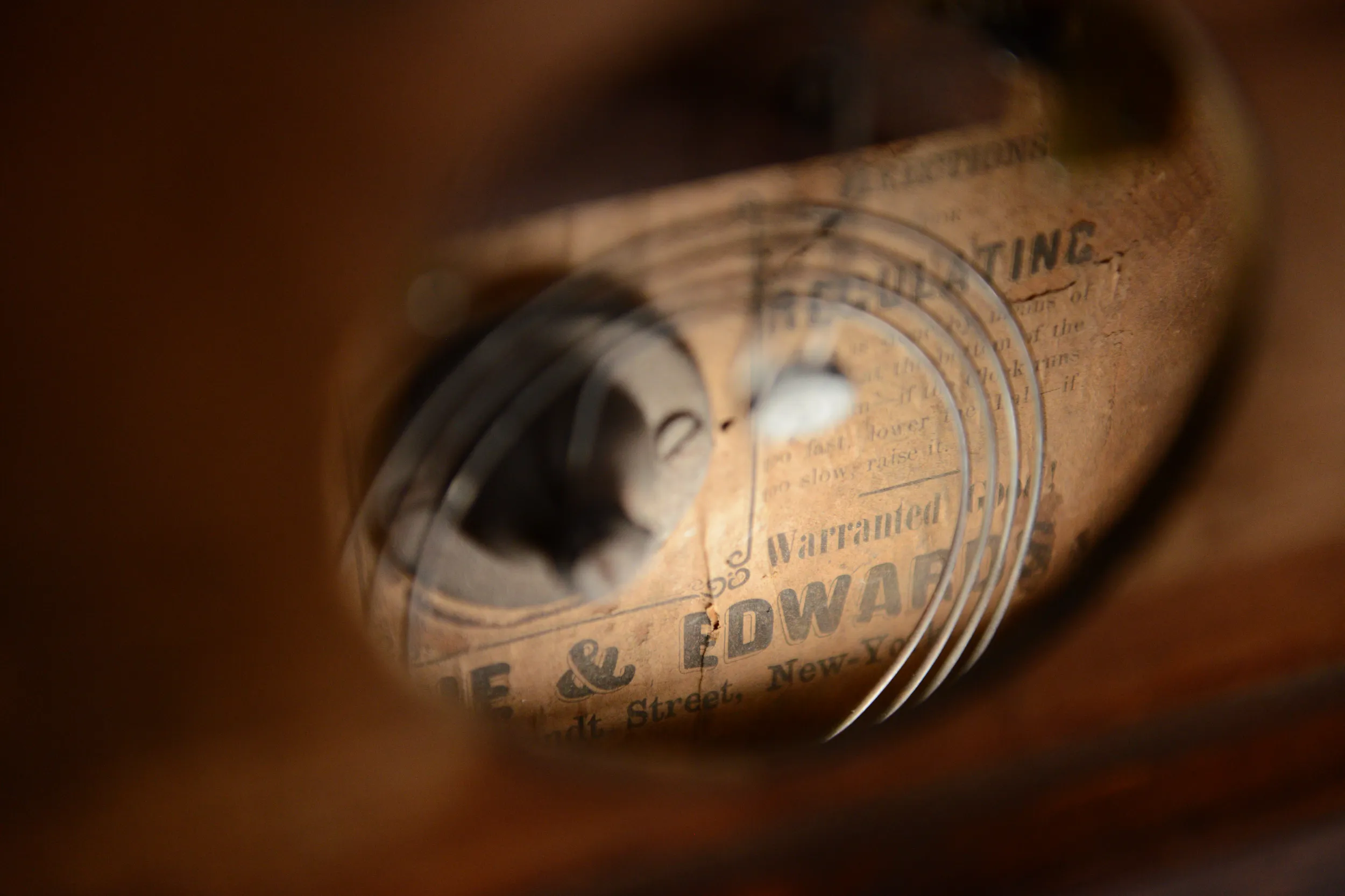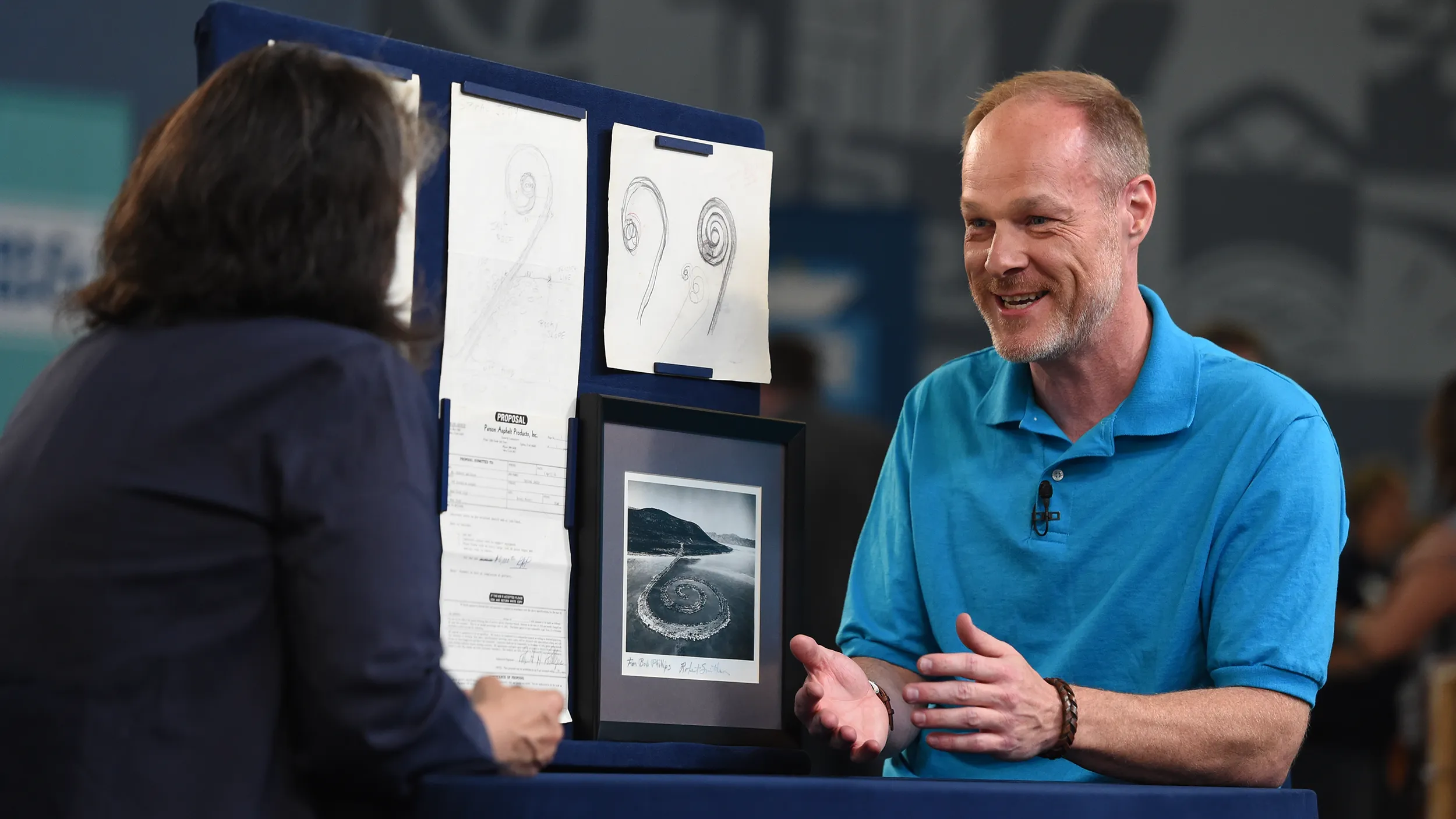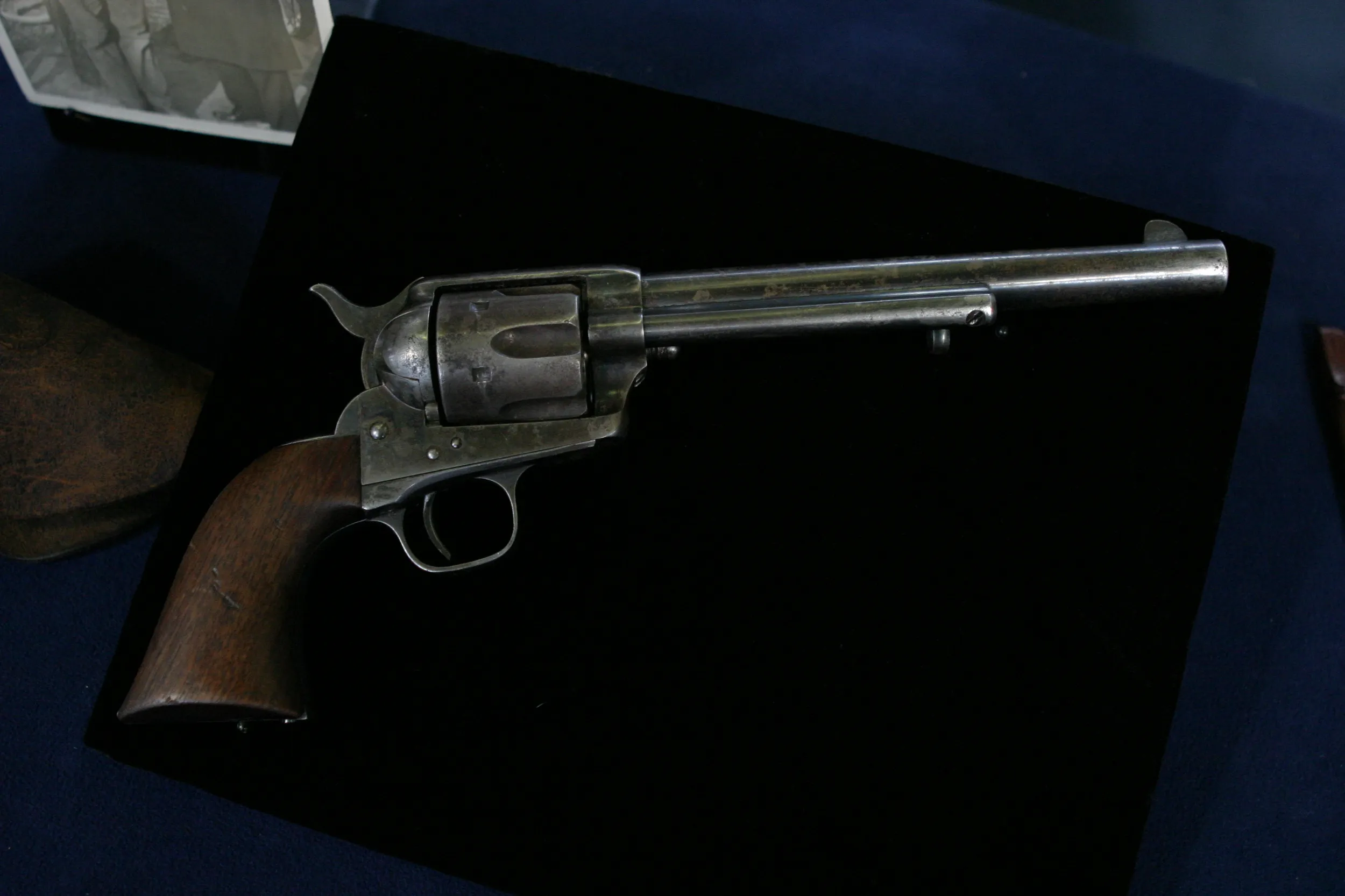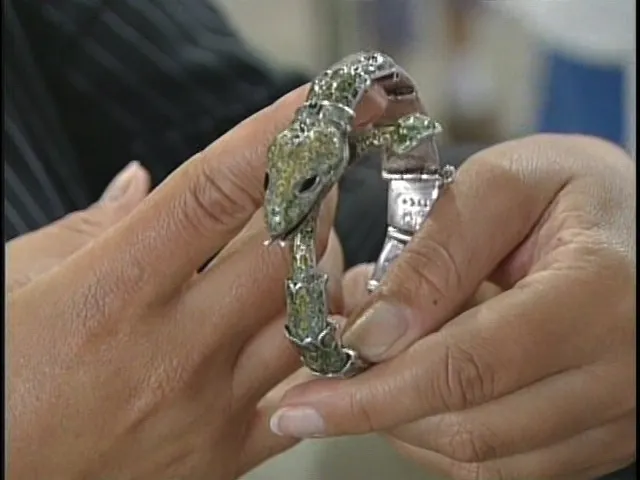GUEST: I brought in a family heirloom clock. It was purchased by my third-great grandfather. The story from my family is that it was purchased during the Civil War. It came to me from my father. He's the one that refinished the outside of the cabinet-- I hope that's not a problem. But it was falling apart at the time, so he fixed it up a little bit.
APPRAISER: And is it something that you use? Do you have it displayed in your house?
GUEST: I have it displayed in the house. I don't wind it, because it's so old I'm afraid to break it. The hands are a little loose there in the center. And so when the minute hand goes down this side, it looks like it's a little fast, and up the other side it looks a little slow. So...
APPRAISER: Well, this clock was actually made by Chauncey Jerome. And they first started making these about 1845. Now, Chauncey Jerome was a very colorful character in the clock industry. He was one of the first people that got involved in mass production on a significant scale, and is probably one of the first-- by today's standards-- millionaires in the clock business. He actually had a movement factory up in Bristol, and when they opened up the Farmington Canal, he made a case-making factory down in New Haven. And he would bring all his movements down to the case-making factory and have them cased there. Then he'd send them all over the world. He was one of the first guys to really export clocks on a grand scale. And from 1843 to 1845, he was the largest manufacturer of clocks in the world. Because of Chauncey Jerome's movement progression and the way that things developed, we put on a date of circa 1845 for this clock. Like most clock businesses, they come and go as fires creeped into their history. In '45 they suffered a big fire, and that really hurt his production. But he regained strength again. Chauncey Jerome becomes the New Haven Clock Company by the 1880s. This Jerome we call a foilfront is just a spectacular looking shelf clock. The case is rosewood, it's considered an exotic wood. The presentation of this clock with the front of it having this foil surface is very, very unusual. It's actually a copper plate that's engraved, and it has a gold wash over the front of it.
GUEST: Oh, okay.
APPRAISER: That's why it has this wonderful presentation, and actually has depth to the details. All these details are engraved into the pattern. So if you lost that gilt surface, it would actually be a copper color. They made this in three different colors, apparently. This one with a black background or a dark navy blue background. I've seen them in green and red. And again, this is a very rare clock. I've seen probably less than a dozen of these things in my almost 25 years of business. You have a very collectible, very desirable mantel clock. Any idea of its value today?
GUEST: Well, I have no idea. I just had a wild guess of $200, but I really don't know.
APPRAISER: Being a collectible clock, it takes it out of the category of what's very, very common. This clock today, if you would try to replace it at a high-end retail shop, a really nice clock shop, you'd probably have to spend somewhere between $1,500, more likely $1,800.
GUEST: Okay.
APPRAISER: Okay?
GUEST: Very good, remarkable. Yes.












